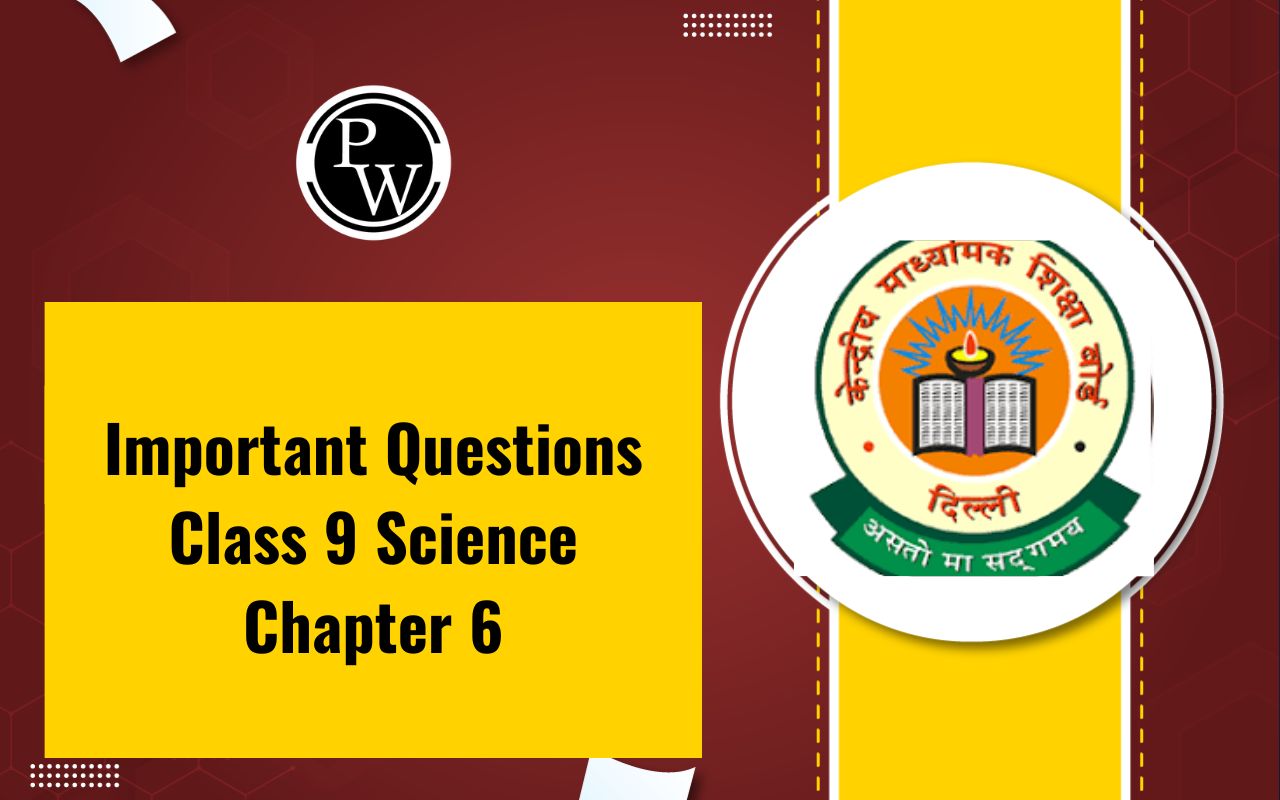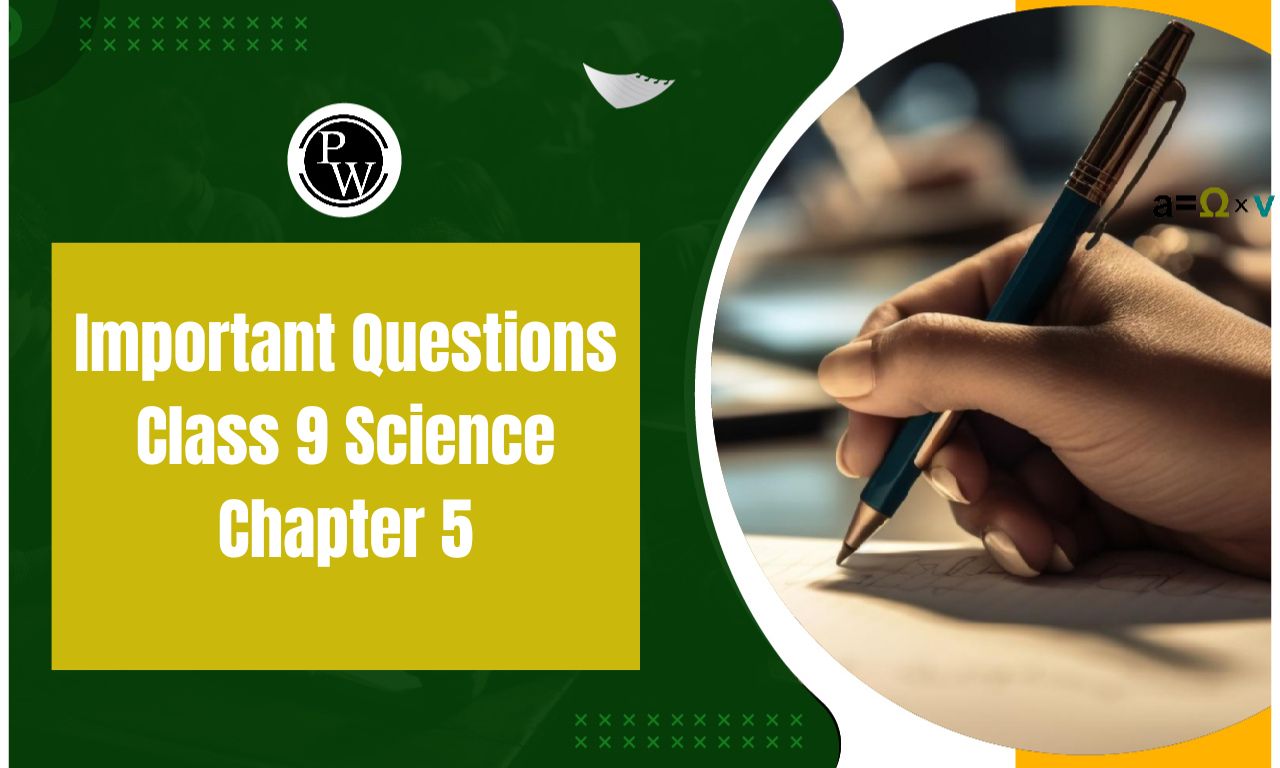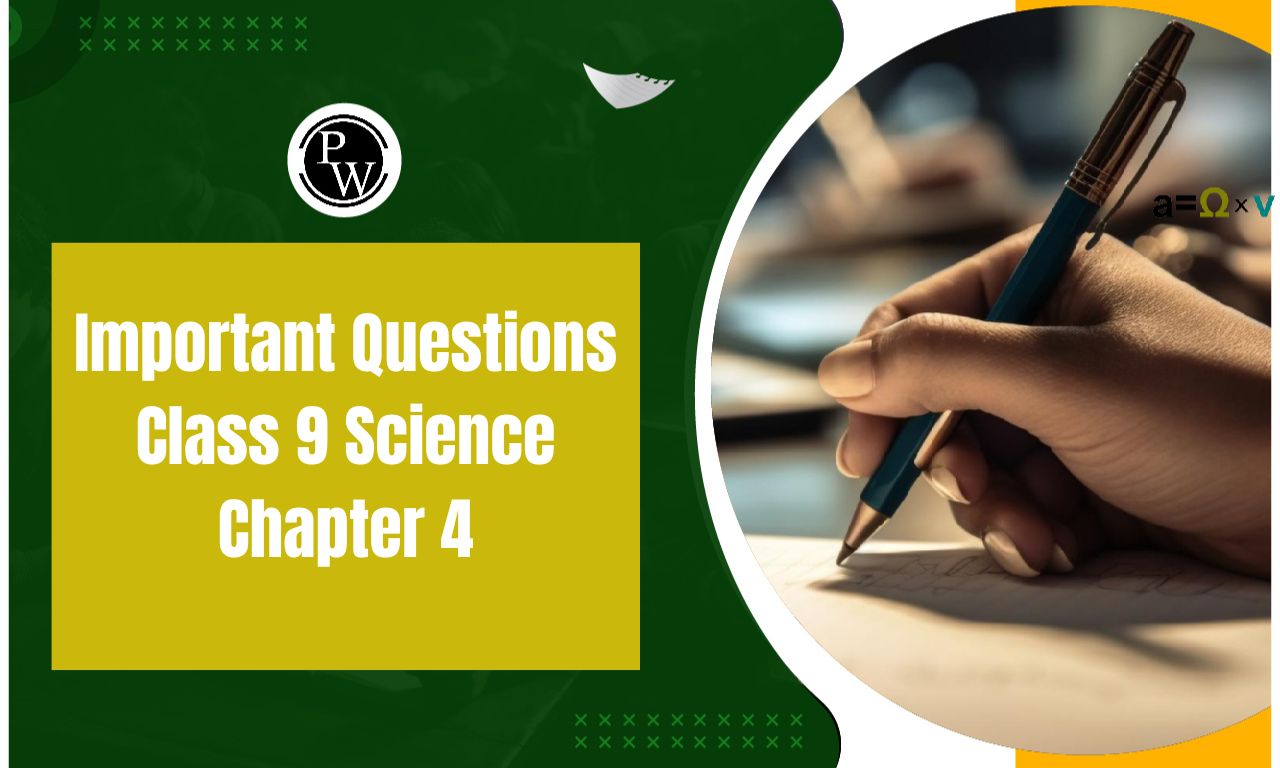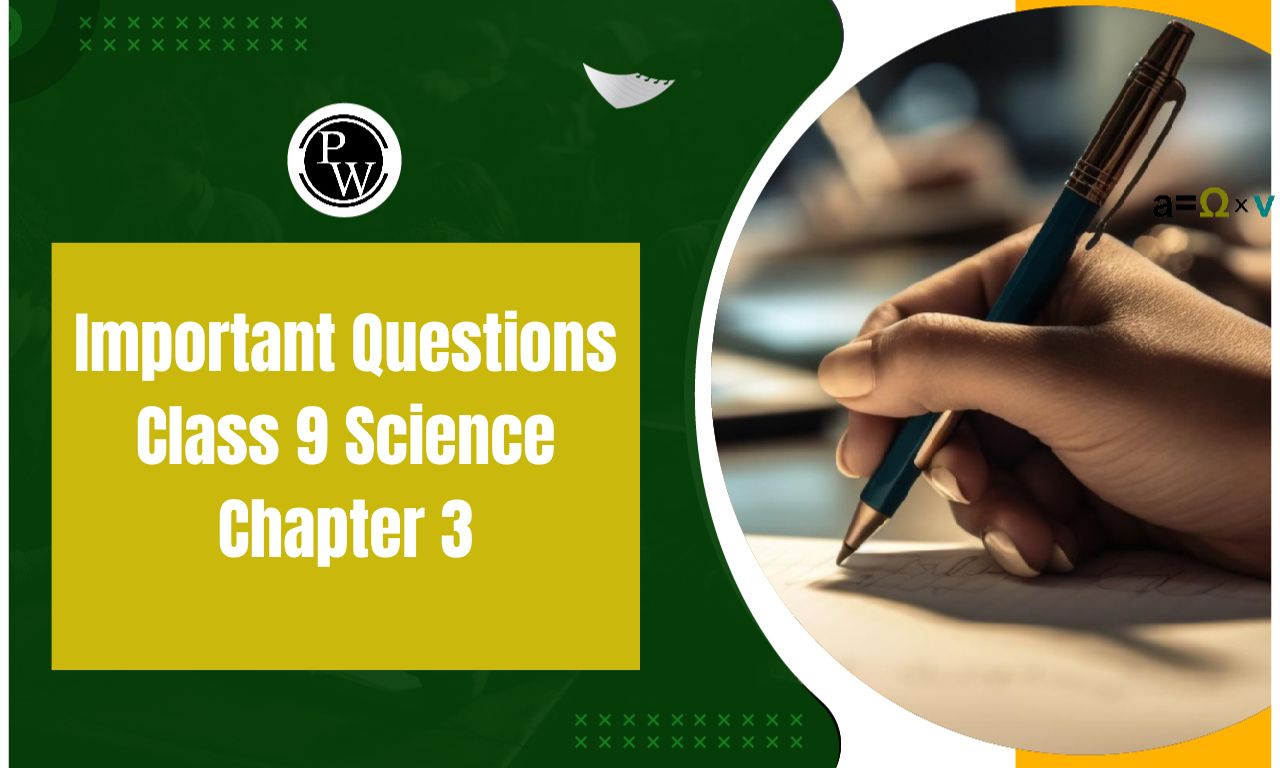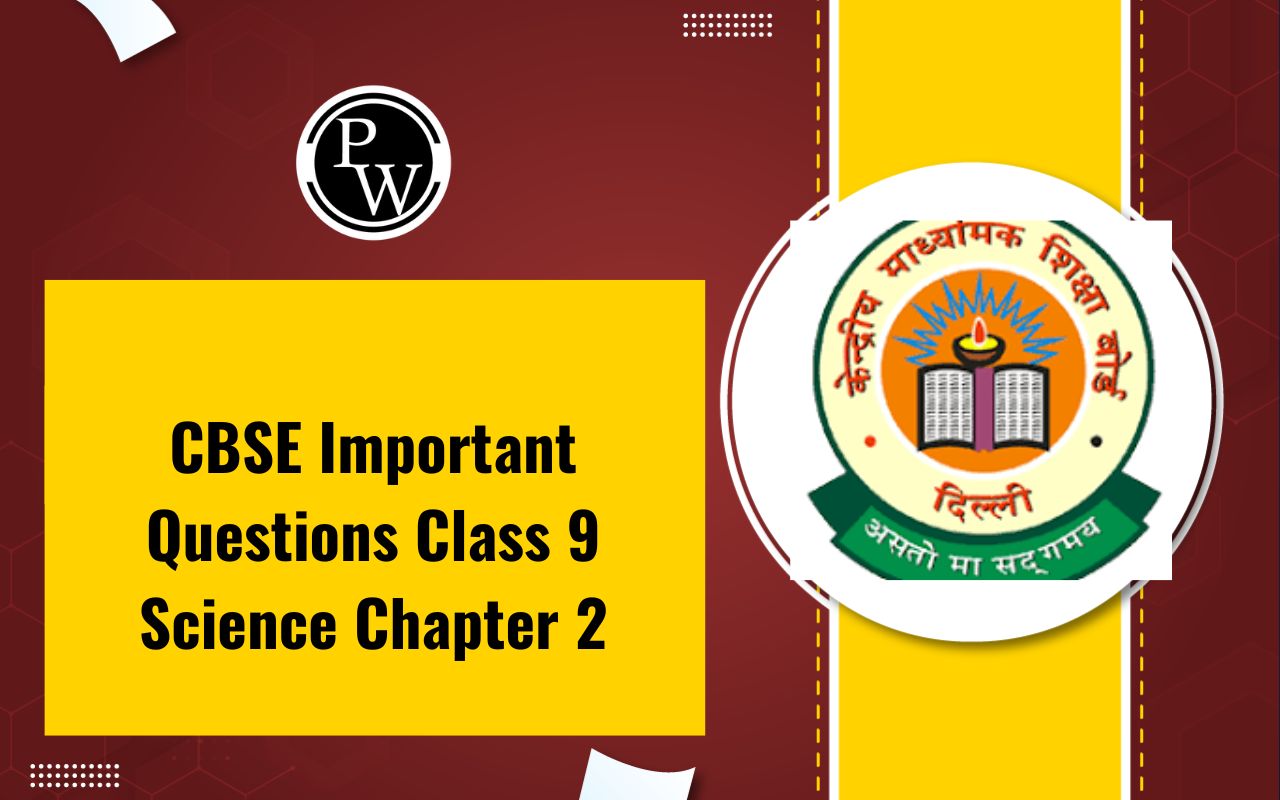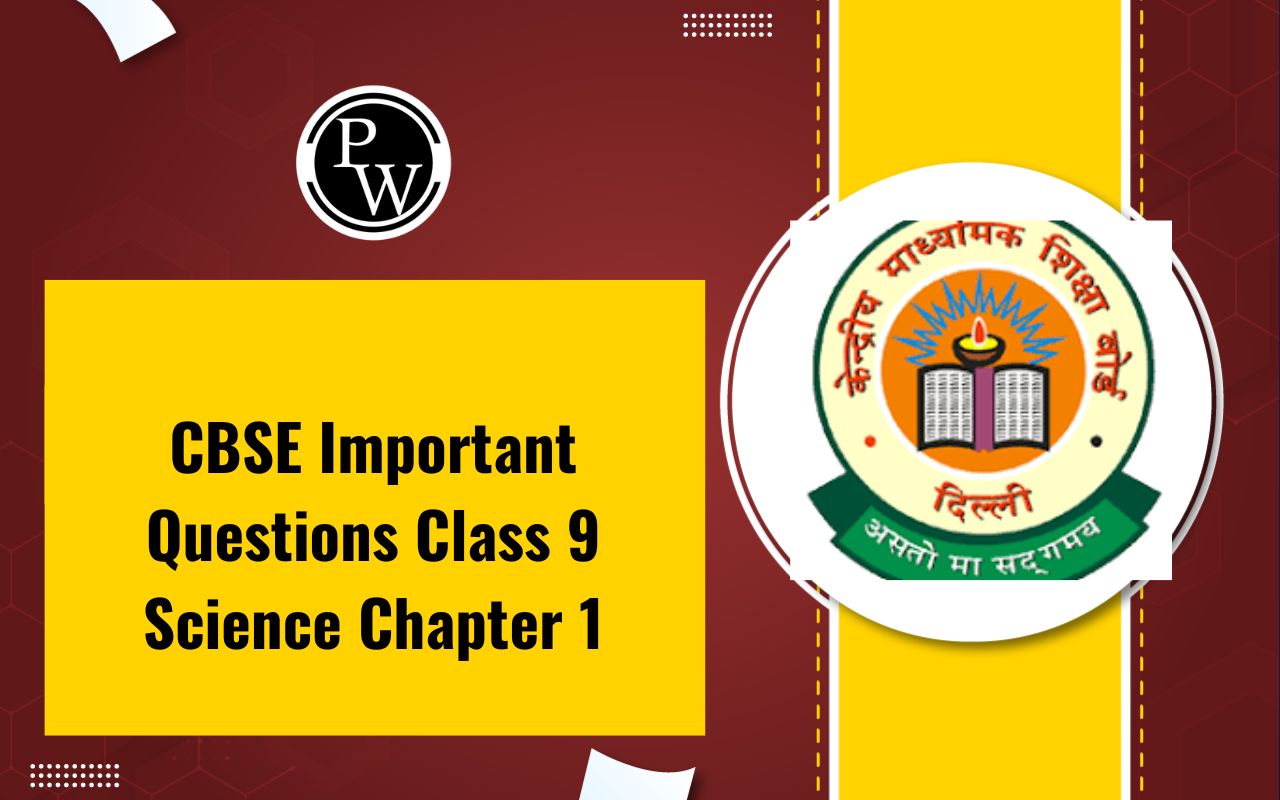
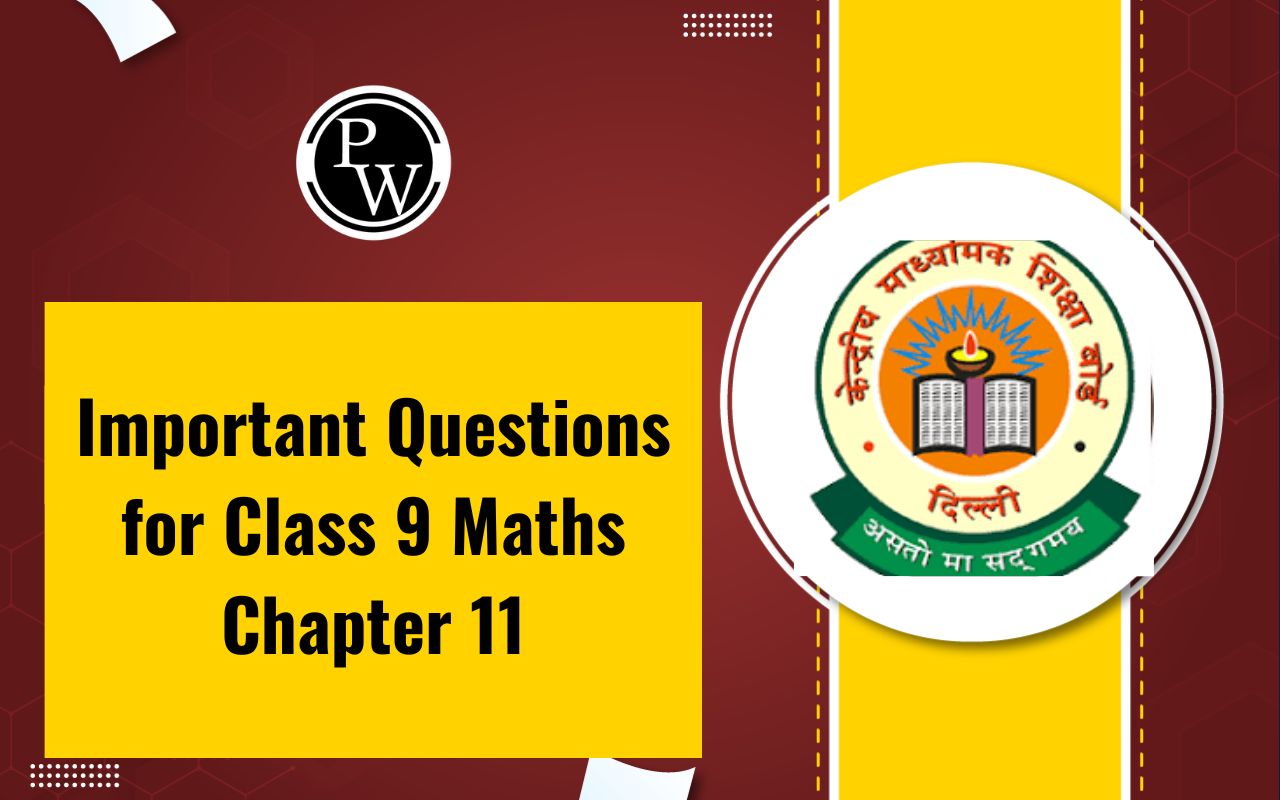
Important Questions for Class 9 Maths Chapter 11: Here are the Important Questions for Class 9 Maths Chapter 11 Constructions focus on the important concepts and techniques needed for geometric constructions. These questions cover various topics, such as constructing angles, bisecting angles and drawing perpendicular lines.
Understanding these concepts is important for developing spatial reasoning and problem-solving skills in geometry. Practicing these important questions will enhance problem-solving skills and boost confidence for exams. By mastering the concepts in this chapter students can build a strong foundation for more advanced studies in geometry.Important Questions for Class 9 Maths Chapter 11 Overview
Important Questions for Class 9 Maths Chapter 11 focus on key construction techniques in geometry. These questions are created by subject experts of Physics Wallah to help students grasp essential concepts like angle construction, bisecting angles and drawing parallel lines. By practicing these questions, students can enhance their understanding of geometric principles and improve their construction skills. This overview emphasizes the importance of these exercises in building a solid foundation for further studies in mathematics and geometry.Important Questions for Class 9 Maths Chapter 11 PDF
The PDF for Important Questions for Class 9 Maths Chapter 11 is available below. This PDF contains a important questions designed to help students in mastering the concepts of constructions in geometry. By practicing these questions, students can enhance their understanding and improve their skills in drawing geometric figures accurately. Make sure to download the PDF to access all the important questions and boost your preparation for exams.Important Questions for Class 9 Maths Chapter 11 FAQs
What are constructions in geometry?
Constructions in geometry refer to the method of drawing geometric figures using only a compass and a straightedge. This includes creating angles, triangles and other shapes based on specific criteria.
Why are constructions important in mathematics?
Constructions help students understand geometric concepts visually and develop critical thinking skills.
How can I improve my skills in geometric constructions?
Practice is key to mastering constructions. Regularly work on construction problems, refer to step-by-step guides, and understand the reasoning behind each step to improve your skills.
What are some common constructions students learn in Class 9?
Students learn to construct the following:
Bisectors of angles
Perpendicular bisectors of line segments
Triangles given specific conditions (e.g., SAS, ASA)
Constructing parallel lines
🔥 Trending Blogs
Talk to a counsellorHave doubts? Our support team will be happy to assist you!

Check out these Related Articles
Free Learning Resources
PW Books
Notes (Class 10-12)
PW Study Materials
Notes (Class 6-9)
Ncert Solutions
Govt Exams
Class 6th to 12th Online Courses
Govt Job Exams Courses
UPSC Coaching
Defence Exam Coaching
Gate Exam Coaching
Other Exams
Know about Physics Wallah
Physics Wallah is an Indian edtech platform that provides accessible & comprehensive learning experiences to students from Class 6th to postgraduate level. We also provide extensive NCERT solutions, sample paper, NEET, JEE Mains, BITSAT previous year papers & more such resources to students. Physics Wallah also caters to over 3.5 million registered students and over 78 lakh+ Youtube subscribers with 4.8 rating on its app.
We Stand Out because
We provide students with intensive courses with India’s qualified & experienced faculties & mentors. PW strives to make the learning experience comprehensive and accessible for students of all sections of society. We believe in empowering every single student who couldn't dream of a good career in engineering and medical field earlier.
Our Key Focus Areas
Physics Wallah's main focus is to make the learning experience as economical as possible for all students. With our affordable courses like Lakshya, Udaan and Arjuna and many others, we have been able to provide a platform for lakhs of aspirants. From providing Chemistry, Maths, Physics formula to giving e-books of eminent authors like RD Sharma, RS Aggarwal and Lakhmir Singh, PW focuses on every single student's need for preparation.
What Makes Us Different
Physics Wallah strives to develop a comprehensive pedagogical structure for students, where they get a state-of-the-art learning experience with study material and resources. Apart from catering students preparing for JEE Mains and NEET, PW also provides study material for each state board like Uttar Pradesh, Bihar, and others
Copyright © 2025 Physicswallah Limited All rights reserved.
Get App

